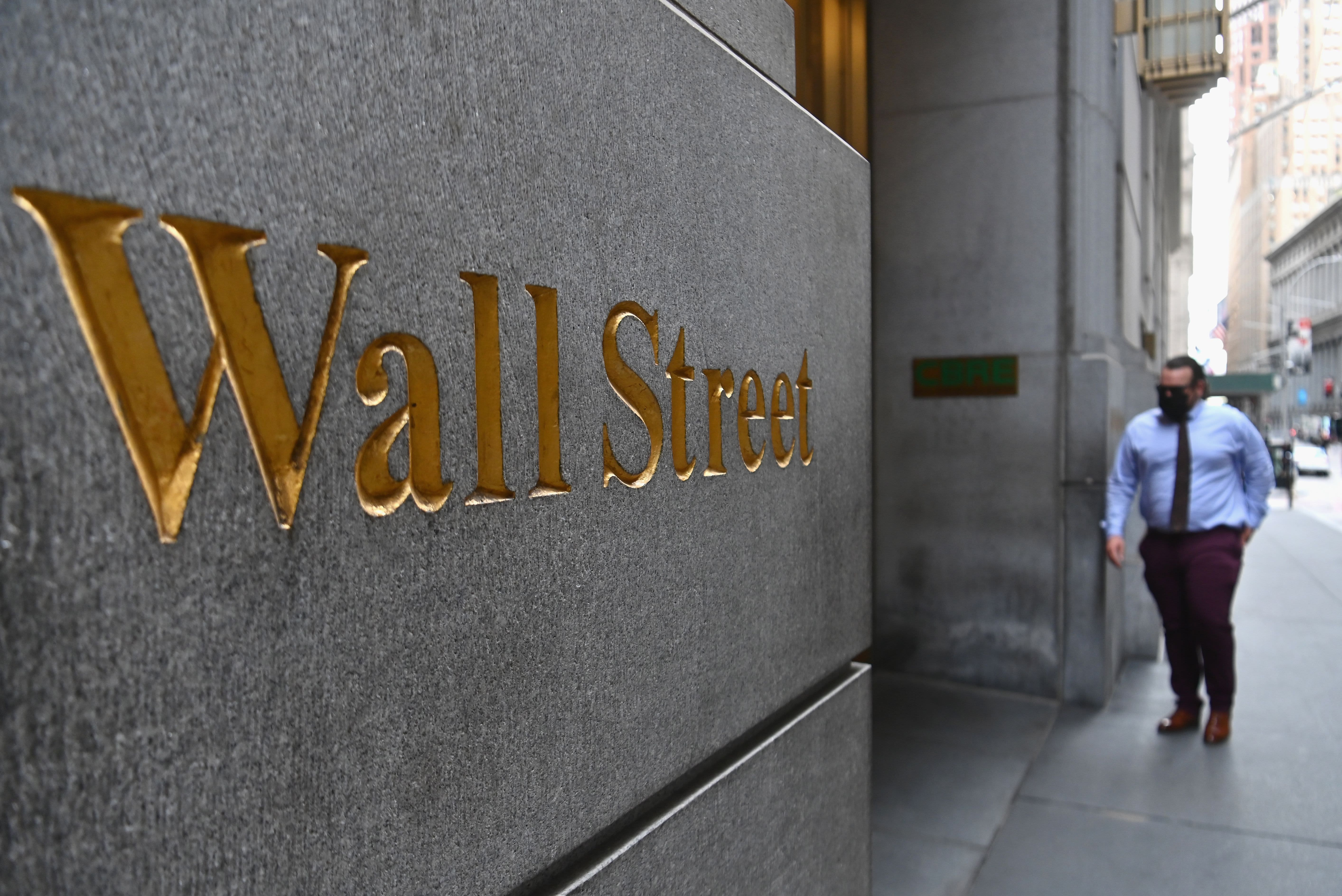
A man walks near the New York Stock Exchange (NYSE) on August 31, 2020 at Wall Street in New York City.
Angela Weiss | AFP | Getty Images
The Dow shake-up
The Dow Jones Industrial Average’s most involved turnover in years went into effect Monday. The index swapped out longtime component Exxon Mobil for cloud-computing newcomer Salesforce, Pfizer for Amgen, and Raytheon Technologies for Honeywell.
When it comes to the ETF industry, there’s one major fund tied to the Dow: the SPDR Dow Jones Industrial Average ETF (DIA), noted Todd Rosenbluth, senior director of ETF and mutual fund research at CFRA.
With $23.4 billion in assets under management, DIA is “very small compared to the three largest ETFs,” the SPDR S&P 500 ETF Trust (SPY), iShares Core S&P 500 ETF (IVV) and Vanguard S&P 500 ETF (VOO), Rosenbluth said Monday on CNBC’s “ETF Edge.”
For comparison, SPY, the largest ETF in the world, has over $307 billion in assets under management.
“If you think about the smart-beta ETFs of growth versus value, dividends, low volatility, the S&P 500 is really the king of the index-based products as opposed to the Dow Jones Industrial Average,” Rosenbluth said. “But this does matter.”
The Dow’s switch was prompted largely by Apple’s 4-for-1 stock split, which also took place Monday. That move took the Dow’s technology exposure down to 20.3% from 27.6%. With the addition of Salesforce, that’s now roughly 23.1%.
“The health-care exposure I think is what’s most notable to us at CFRA. The weighting went from about 14% to 18% because Amgen is taking Pfizer’s spot in this price-weighted index [and] Amgen has a higher stock price,” Rosenbluth said. “It’s just a reminder that ETFs are not static. You need to stick with them. But this is not as big as if it was tied to the S&P 500.”
Thematic ETFs on fire
Global X’s suite of thematic ETFs is exploding, particularly its tech-focused products. Here are some of the biggest year-to-date moves:
These are “not just a flash in the pan because of Covid-19,” but themes that could continue to grow into the 2030s, said Jay Jacobs, senior vice president and head of research and strategy at Global X.
“Covid-19 has been an accelerant for many of these themes,” he said in the same interview. “There was already a lot of people that shopped online, but people had no choice but to shop online in March and April under stay-at-home orders. And there was a lot of people playing video games, but people had nothing else to do when there was no live sports.”
“They’ve already been on these very strong organic growth trajectories, but Covid-19 really changed people’s habits and accelerated the adoption of these themes such that growth is going much faster than we originally anticipated,” Jacobs said.
HERO, LIT, CLOU, SOCL, FINX and MILN all hit record highs on Tuesday.
Accessing the Ant Group IPO
The SPAC ETF
You read that right: ETF issuer Defiance has announced it will launch an ETF for special purpose acquisition companies as the investing trend gains traction on Wall Street.
The Defiance NextGen SPAC IPO ETF, which will trade under the ticker SPAK, will be a one-stop shop for shares of these blank-check companies. SPACs typically seek to merge with or acquire private companies within two years. Fifty-one SPACs, including popular names such as DraftKings, have raised a total of $21 billion in 2020.
“SPACs are a structure just like ETFs are. They’re designed to bring companies out to IPO in perhaps a more efficient way because they give price certainty to those companies that are coming public,” Jacobs said.
“The question, though, is what are they going to buy?” he said. “Are they going to buy a driverless car company? Are they going to buy a space exploration company? Is it maybe a more traditional consumer packaged good company? You don’t really know what they’re going to be.”
Jacobs’ advice to investors was to stay disciplined with SPACs despite their popularity.
“From an investment perspective, investors might be wise to wait and see what those SPACs ultimately become before diving in because, again, they’re just a structure,” he said. “You don’t really know what you’re going to get until they make their big purchase.”




